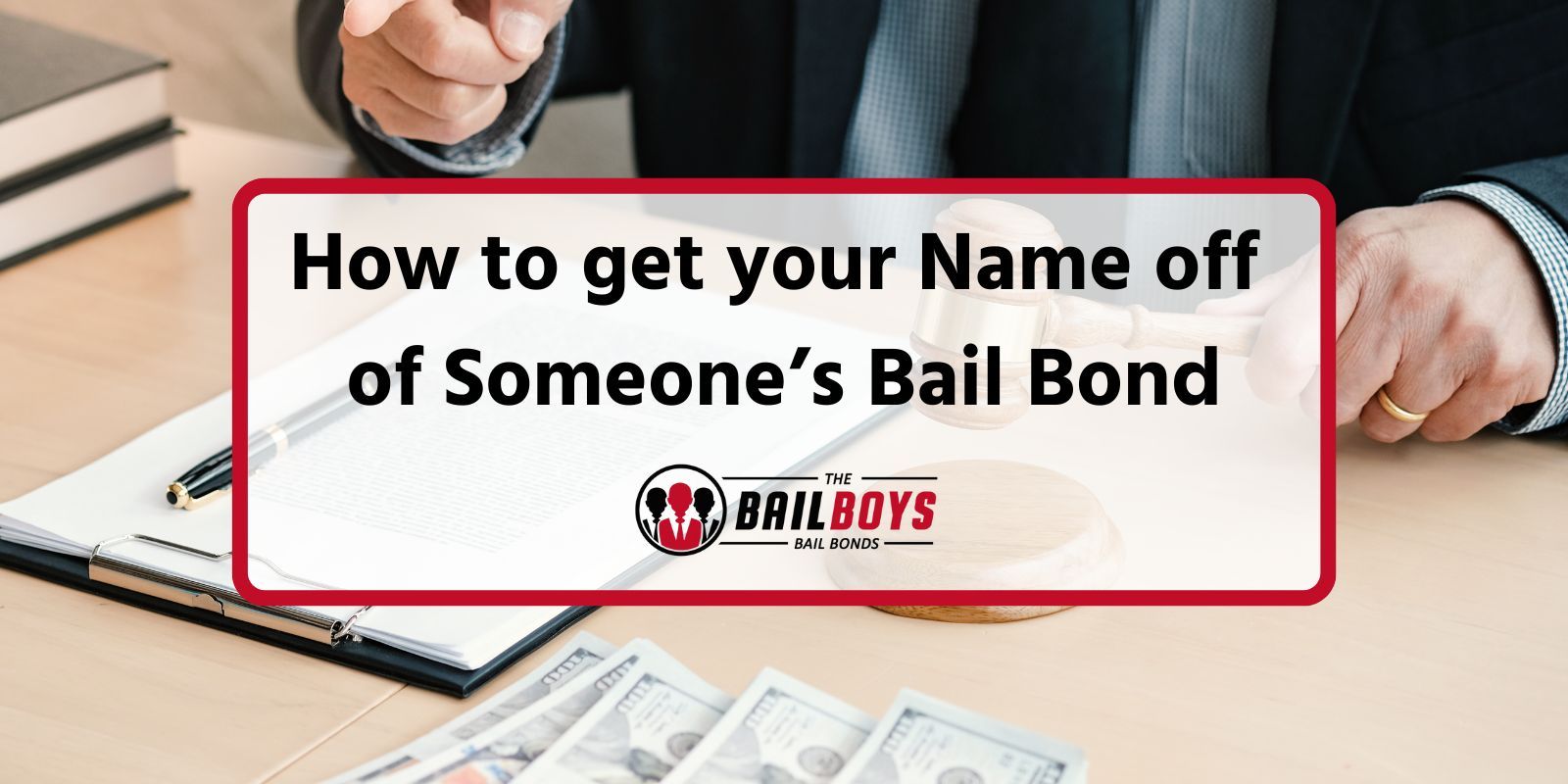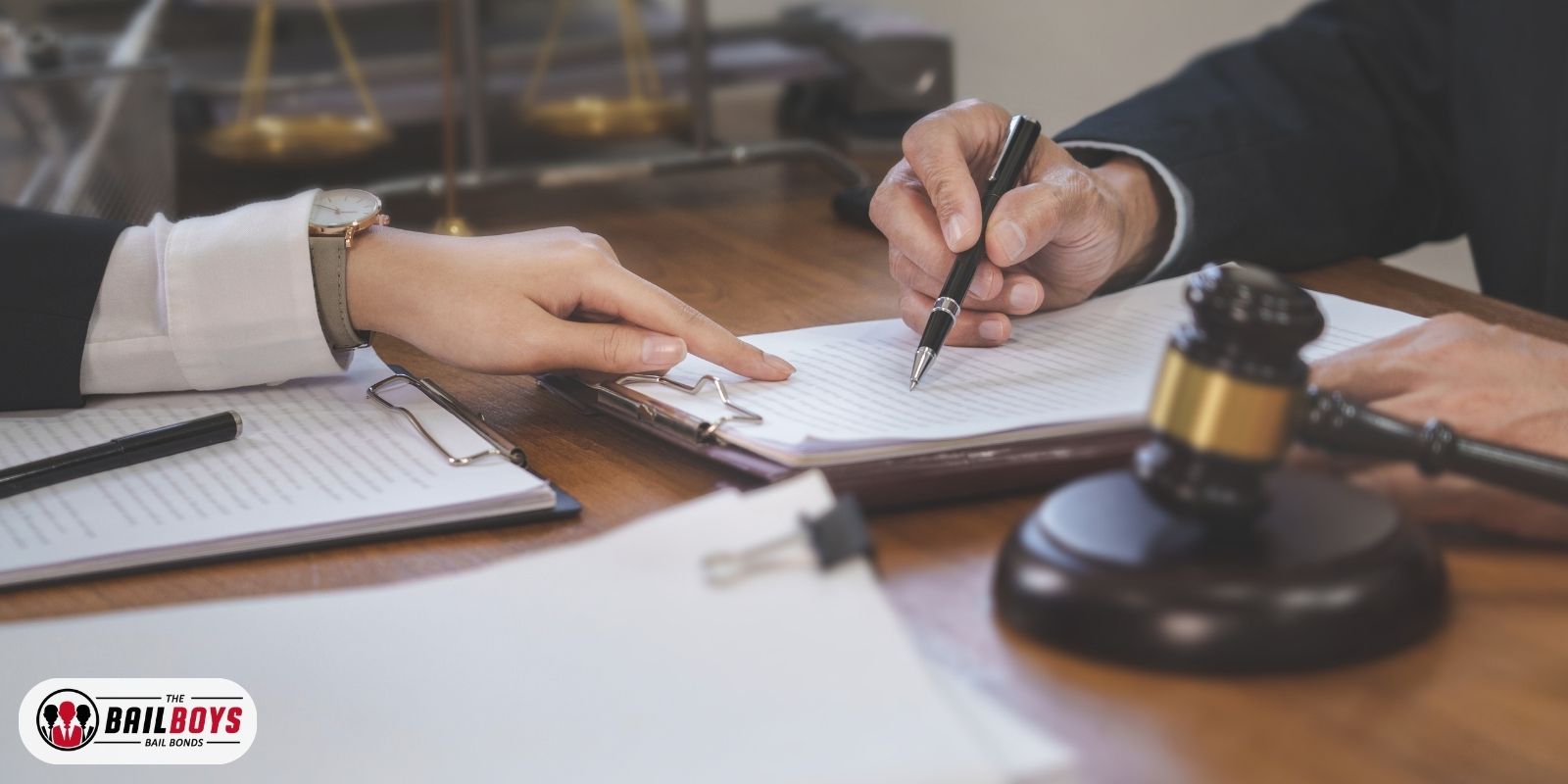
How To Get Your Name Off Of Someone’s Bail Bond
When you agree to co-sign for a friend or family member’s bail bond, you’re taking on significant financial and legal responsibility. But circumstances change, and there may come a time when you wish to remove yourself from this commitment. Whether due to broken trust, financial strain, or a change in your understanding of the process, understanding how to get your name off of someone’s bail bond is crucial.
In this article, we will discuss the steps involved in removing your name from someone’s bail bond and how to do it effectively.
Step-by-Step Guide To Get Your Name Off of Someone’s Bail Bond in California
When you cosign a bail bond in California, you take on substantial responsibilities. Removing your name can be complex, so here’s the step by step guide that addresses possible questions for each step:
Speak With An Attorney
Why? Legal nuances of criminal defense and cosigner rights can be intricate. A lawyer ensures your actions align with California’s requirements and can help answer any questions you have.
How? Engage with an attorney who specializes in California’s bail bond and jail system.
When? As soon as you consider removing your name, even before contacting the bail bondsman.
Contact the Bail Bondsman
Why? The bondsman facilitates the bond agreement and holds power in its modification.
How? Call or visit the agency that arranged the bond.
What’s special about California? Bondsmen operate under the California Department of Insurance regulations, ensuring professionalism and adherence to state guidelines.
Provide a Concrete Reason
Why? You must justify your request to revoke your cosigning commitment.
What reasons are acceptable? Breaches by the defendant, like missing court dates, or personal reasons impacting your finances.
Do I need proof? In many cases, yes you’ll need to provide proof. Especially if it pertains to the defendant’s actions.
Anticipate Negotiations
Why? The bail bond agent’s security is paramount, and agents may need reassurances.
What might they request? They could ask for a replacement cosigner or discuss adjusting the bond terms.
What costs could arise? You might be liable for additional fees, depending on your contract and initial agreement.
California’s Court Intervention
Why? If a bondsman is uncooperative or the situation is complex, legal intervention might be necessary.
How? File a motion to modify the bail bond terms in the county where the bond was issued.
What should I prepare? Documents showcasing your reason, communications with the bondsman, and any evidence supporting your request.
Completion of Removal
Why? To ensure all legal processes are duly completed.
What are the procedures? These vary but can include signing legal documents and getting confirmations.
How long will this take? Depending on the case’s complexity, it could range from a few days to several weeks.
Documentation and Collateral
Why? To confirm your removal and retrieve any collateral.
What documentation? A written confirmation or release document from the bail bond agent.
What about collateral? If you provided collateral, like property or valuables, it must be returned once bond obligations are met. Ensure you obtain any collateral in its original condition and have this stipulated in written form.
After Removal
What now? Monitor the defendant’s actions. If they default or skip bail before your name’s removal, you might be liable.
How can I ensure no future liability? The written confirmation of your removal should explicitly state your release from any future financial or legal obligations related to the bond.
Understanding Bail Bonds For Cosigners
Defendants have three options for posting bail: cash bail, bail bonds, and property bonds. Bail bonds are the most popular choice because they’re the least expensive. A bail bond involves a bail bondsman, who acts as a third party and provides a financial guarantee to the court that the defendant will attend all court procedures.
Typically, a bail bondsman charges a non-refundable fee, which is a certain percentage of the bail amount, in exchange for providing a financial guarantee to the court. Additionally, they require both the defendant and their cosigner to sign the bail bond agreement.
A bail bond agreement is a legal contract involving the defendant, the defendant’s cosigner, the bail bond company, and the court. The agreement allows the defendant to be released from custody on bail through a bail bond. Both the bail bond company and the cosigner agree to take responsibility for ensuring that the defendant appears in court and fulfills all their court obligations while on bail.
What is a Cosigner?
A co-signer is someone who takes legal and financial responsibility for making sure the defendant shows up for court proceedings as required after they’re released.
When someone is arrested and charged with a crime, they might be granted bail by the court. If they cannot afford the full bail amount set, a bail bondsman is involved and a co-signer might be needed.
Once someone cosigns a bail bond agreement, they take on certain responsibilities.
Responsibilities of a Cosigner
A cosigner is an important party in the bail bond agreement. It’s crucial to carefully consider the decision to cosign since the financial and legal consequences can be severe.
Once a cosigner signs the bail bond agreement, they are responsible for various duties, including:
Paying the bail bond fees: A bail bond company charges a nonrefundable typically a percentage of the bail amount for the financial guarantee to the court. A cosigner may assume the liability of paying the bail bond fees.
Financial Guarantee: Should the defendant forfeit court, the cosigner is responsible for paying the full bail amount once they sign the bail bond agreement.
Ensuring the defendant shows up for court proceedings: A cosigner guarantees that the accused attends all court hearings and meets their legal responsibilities. When a cosigner is involved, both the bail agent and the court feel assured that the accused will show up for all court proceedings.
Collateral Requirements: The requirements for collateral from a bail bondsman will vary based on the specifics of the bail. In some cases, a cosigner may need to provide property or assets as collateral.
Risk Mitigation: Bail bondsmen frequently ask for a cosigner to lower their financial risk. When the defendant forfeits the court, the cosigner agrees to step in and pay the bail amount, which reduces the potential losses for the bail bondsman.
Legal obligations: Once a cosigner signs the bond agreement, they are legally bound by its terms. If the defendant decides to forfeit court, both legal and financial consequences can be faced by the cosigner.
Bail agencies often allow co-signers to impose conditions on a bond, such as requiring the defendant to enter a rehab program or seek counseling to ensure they show up for all court proceedings.
If a cosigner decides to remove their name from a bail bond, the defendant will be re-arrested until they can find another way to post bail.
If a cosigner has doubts about the defendant’s ability to fulfill their court obligations and show up for a court date, they can remove their name from a bail bond at any time. However, there are certain circumstances where a cosigner cannot revoke a bail bond.
Some of those circumstances include:
When a defendant has not made all of their court appearances.
If both the defendant and the cosigner have breached the bail bond agreement.
The Need for Removing Your Name from a Bail Bond
As a cosigner, you have the right to remove your name from a bail bond at any time. There can be multiple reasons why a cosigner might choose to do so, including:
Lack of trust: As a cosigner, if you have reason to believe that the defendant will not fulfill their court obligations, you have the ability to revoke a bail bond.
Defendant’s non-compliance: If the person accused of a crime does not follow the rules established for their release, then it is necessary for you to remove your name from the bond agreement.
Personal Relationship changes: Personal relationships can change over time and a cosigner might feel the need to revoke a bail bond to avoid any further interaction with the defendant.
Overwhelming Financial Responsibility: If the defendant forfeits the court, it is the responsibility of the cosigner to pay the full bail amount. If collateral was involved you might end up losing property or assets.
What Happens to the Defendant when Your Name is Removed from a Bail Bond?
Depending on the circumstances under which you as the cosigner decided to revoke the bail, the court may decide to modify the terms of the bond.
The defendant may face the possibility of being rearrested if they are unable to find another way to secure bail or obtain a different cosigner for the bail bond agreement.
In some cases, removing your name from a bail bond, might lead to increased scrutiny of the defendant by the bail bond agent to ensure compliance with the conditions set during the bail release.
Considerations Before You Co-sign a Bail Bond
Before you cosign a bail bond for a family member or friend, there are a few factors you need to keep in mind.
You need to understand that you are fully responsible for the defendant. You need to be responsible to ensure that the defendant shows up for all court proceedings and adheres to the conditions set for bail release.
You also need to understand the financial responsibility you take on once you agree to cosign a bail bond agreement. As a cosigner, you might be required to pay the bail agent’s non-refundable fee or put up collateral to secure the bond.
As a cosigner, you can also put in a few stipulations in the bond agreement, You can require the defendant to do a drug test or join rehab to ensure they fulfill their court obligations.
Before committing to be a cosigner on a bail bond, it is recommended that you consult with a legal professional. They can help you understand exactly what you are signing up for and guide you on how to proceed.
The Role of Legal Professionals in the Process
A legal professional plays a crucial role in the process of cosigning a bail bond.
They offer advice and guidance to the cosigner on how to go about cosigning a bail bond and how to remove their name from a bail bond should the need arise.
Legal professionals also review the terms of the bail bond agreement and ensure the bail bond agreement is compliant with the law.
Attorneys also assess the risks involved in cosigning the bail agreement and advice the cosigner based on their findings from the assessment.
When someone needs to remove their name from a bail bond, attorneys can guide them through the process. If the cosigner is required to file a motion to have their name removed from the bail bond agreement, the attorney can also assist with this process.
Conclusion
When you co-sign a bail bond, you take on a significant responsibility that comes with both financial and legal obligations. As a cosigner, you are responsible for ensuring that the defendant appears in court and may need to pay non-refundable fees or collateral. If you want to remove your name from a bail bond, it’s important to follow a careful process. Seeking guidance from a legal professional is highly recommended, as they can help you navigate the complex steps involved, such as communicating with the bail bondsman, stating valid reasons, negotiating, and even potentially going to court.
Keep in mind that removing your name from a bail bond may impact the defendant’s bond terms and lead to increased scrutiny. Before you co-sign a bail bond, it’s essential to carefully consider the risks and legal advice to fully understand and mitigate them.







